In Photos: Urban Bobcats Stroll through the American Southwest
Welcome to the neighborhood

Bobcats, Lynx rufus, are small, burly cats that are found throughout North America. There are 12 recognized subspecies of bobcats that range from southern Canada to northern Mexico. In the American Southwest, where man has continued to build his homes farther from the center of established cities, the urban bobcat has become a common subdivision neighbor.
Anybody home?
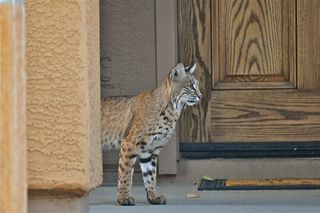
Bobcats by nature are carnivores. In these newly developed communities, close to their undisturbed natural environments, the urban bobcat is often seen in the early morning or late evening strolling through the newly developed neighborhood in search of small prey.
Ready for a dinner guest?
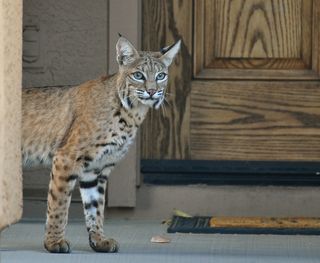
Shown in these photos is the subspecies Lynx rufus baileyi that occurs most commonly in the Sonoran Desert-scrub and chaparral habitats of the American Southwest. A typical male will be 2 to 4 feet (0.61 to 1.2 meters) in length, 18 to 24 inches (46 to 61 centimeters) tall and weigh between 15 and 35 pounds (6 and 15 kilograms). The females will be somewhat smaller. Their long, pointy ears are tipped with black tufts, and both genders have large, white side-whiskers.
Checking out the area
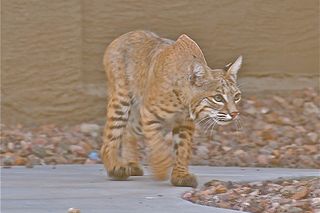
Bobcats' primary food source is the desert cottontail, Sylvilagus audubonii, and the black-tailed jackrabbit, Lepus californicus, with whom they share their natural environment. They are said to be crepuscular, meaning their greatest periods of activity are during the time of dawn and dusk to mirror the activity patterns of their two primary prey species.
Not a picky eater
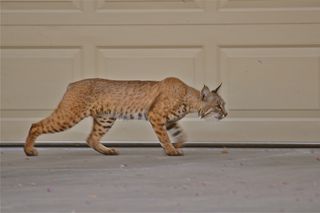
But a hunting bobcat is the classic opportunist and will quickly make a meal of other small animals, such as ground squirrels, mice, birds, wood rats, insects and reptiles. A hungry bobcat will aggressively take on an occasional rattlesnake rather than go hungry. Sadly, bobcats have been known to capture unattended domestic cats or even small dogs.
Who me?
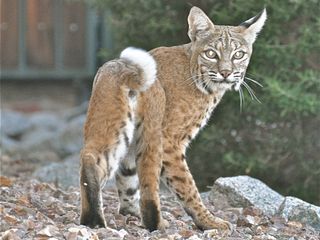
The bobcat's scientific name, Lynx rufus, is a great descriptor of the animal's beautiful appearance. Lynx is a Latin word that refers to the cat's amazing eyes, as it means "light," and rufus is Latin for the various shades of "reddish-tan" that make up the animal's beautiful fur coat. Their undersides are always whitish in color, and the entire coat is covered with mottled black spots.
Peek-a-boo
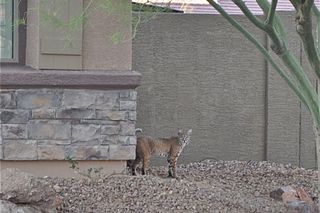
Bobcats are known by many common, regional names. Bay lynx, wildcats, pallid bobcats, catamounts, cat lynx and red lynx are all names attributed in some parts of the continent to the bobcat. Bobcats are usually seen alone. When seen in groups, the individuals are usually a mating pair, or siblings or a mother with her kittens.
Sign up for the Live Science daily newsletter now
Get the world’s most fascinating discoveries delivered straight to your inbox.
I spy ...
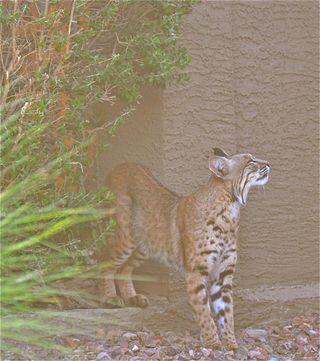
The months of February and March make up the mating season for bobcats. A litter of two to four kittens will be born in May to early June. Bobcat kittens tend to stay with their mother for seven to 12 months depending on the local food supply. A bobcat has a natural life span of 10 to 15 years.
A namesake
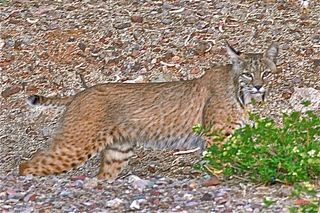
Bobcats get their common name from their tails that are shorter than most other cats. The short, "bobbed" tail is only about 10 inches (24 cm) in length with the top hairs of the tip being black. The hunting territory of a bobcat can vary greatly based on the territory's quality. Ranges have been documented as small as 1 square mile (2.6 square km) to as large as 40 square miles (104 square km). An urban bobcat's range is usually significantly reduced because of the ample rabbit/rodent foods typically found within an urban neighborhood.
Taking a moment
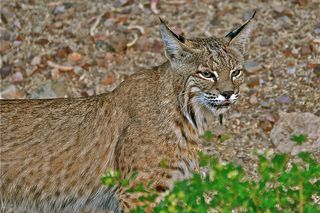
Urban bobcats coexist with their human neighbors remarkably well. There are only a few documented negative interactions between bobcats and the humans of their shared neighborhood. The greatest danger for urban bobcats is accidental poisoning that can occur from eating rodents that have ingested some type of household pesticide (rat poison). Vehicle strikes are also a danger in an urban setting as are attacks from large, aggressive dogs.
On the prowl
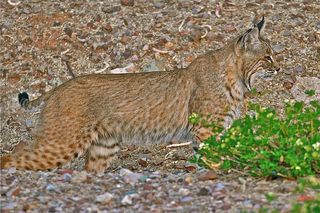
Water is a primary attraction for bobcats in the dry, southwest desert area. Backyard swimming pools, birdbaths, fountains and even pet water dishes will attract this thirsty feline. Bobcats have been known to easily scale a 12-foot-high fence to get into a cool, refreshing backyard.
Most Popular

